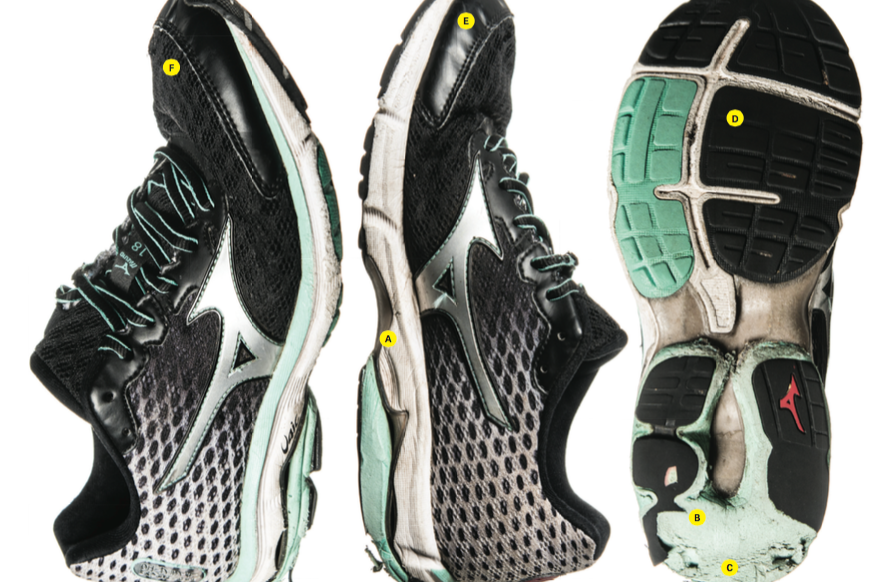Signs It's Time To Ditch Your Running Shoes

Photo: Oliver Baker
We’ve all had that favorite pair of running shoes that you just can’t bring yourself to throw away. But after so many miles, a too-worn shoe will start rebelling and can cause damage to your joints, muscles and bones. Here’s how to know when to keep—or ditch—your go-to run kicks.

A: “If you can see compression lines in the foam it means the billions of little bubbles in the foam are popping and not supporting the runner,” says Darren Griffith, manager at Village Runner in Redondo Beach, Calif.
B: Where the rubber meets the road should always remain intact. “By the time you see this sort of wear on the outside, the foam inside has been done for a while,” says Griffith.
C: Despite being one of the most worn shoes he’s seen in his decade-long career, Griffith says the way the pictured pair is worn is very good. “The central wear pattern shows that at least the runner has the right kind of shoes,” he says. However, he adds that the athlete is either heel striking or dragging his feet and that he might do better with a shoe featuring a lower heel offset.
D: “When the shoe caves readily and doesn’t bounce back, it’s time for new shoes,” says Griffith, noting that there was no spring left when he pressed his finger into this pair. “Fresh foam gives, rebounds and bounces back.”
E: “Only put your shoes in the washer or dryer if you don’t want to use them anymore,” says Griffith. Machine washers and dryers break down the foam inside and can cause misshaping. Experts recommend hand cleaning with a rag using Windex, water and soap.
F: Ignore holes in the mesh. “There are people who blow the toe quickly through the top of the shoe every time,” says Griffith. “Some people will think it’s a defect, but it doesn’t matter. Aside from aesthetics, it won’t affect the performance of the shoe.”